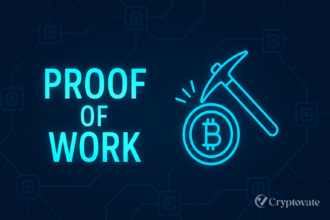– Ad –
| Getting your Trinity Audio player ready... |
In the world of decentralized finance (DeFi), protocol-owned liquidity (POL) isn’t just another buzzword; it’s a full-blown strategy shift, and it’s changing how protocols grow, survive, and retain value.
If you’ve been in DeFi for even a minute, you know the mercenary capital game. Protocols lure in users with token rewards, watch liquidity spike, and then suffer a brutal exit once incentives dry up. Users leave. Liquidity drains. The token dumps. Rinse, repeat. POL flips that script.
What Is Protocol-Owned Liquidity?
At its core, protocol-owned liquidity (POL) means the DeFi protocol owns the liquidity in its pools instead of renting it from yield-chasing users.
Traditionally, DeFi platforms needed to incentivize liquidity, usually by offering high APYs in return for users locking their tokens into pools. That liquidity disappears the moment rewards drop. It’s temporary, unreliable, and expensive to maintain.
POL solves that. The protocol itself becomes the LP. It owns the pool, controls the depth, and reaps the trading fees.
Why is Rented Liquidity a problem?
Mercenary capital has been bleeding protocols dry. Users stake tokens only to farm rewards, then exit the moment they see a juicier APY elsewhere.
This creates an unstable environment for any DeFi project. Imagine trying to build a business on a customer base that only shows up when you’re handing out freebies.
That’s what most DeFi protocols did pre-2021. It was a race to the bottom, and everyone paid for it, especially the token holders.
How does POL work?
Instead of offering high APYs to attract LPs, POL protocols offer bonds. Here’s how bonding works:
- A user gives the protocol liquidity (usually LP tokens).
- In exchange, they receive the protocol’s native token at a reduced price.
- The token vests over a few days, so it’s not an instant dump.
This way, the protocol builds up ownership of liquidity over time, rather than renting it. OlympusDAO was the poster child for this model, and others like Tokemak and Redacted Cartel have followed suit.
It’s like buying the bar instead of just running happy hour.
POL vs Traditional Liquidity Mining
| Feature | Traditional Liquidity Mining | Protocol-Owned Liquidity |
| Who owns liquidity? | The community | The protocol |
| Sustainability | Low to heavy token emissions | High to no ongoing rewards |
| Control | None | Full control over LP |
| TVL Stability | Fluctuates rapidly | More sticky and stable |
Traditional liquidity mining is great short-term. POL builds a future.
Also Read: Why Audits Are Non-Negotiable for DeFi Protocol Security in 2025
Why is POL Core to DeFi 2.0?
DeFi 2.0 isn’t just a buzzword. It’s a rethink of how protocols grow, sustain, and reward participation. Here’s what makes POL critical to this new era:
- Capital efficiency: No more wasteful emissions.
- Better market depth: Protocol can control its own pairs.
- Revenue generation: Trading fees go back to the protocol treasury.
- Reduced sell pressure: No ongoing token sales by yield farmers.
Protocols that adopt POL aren’t just surviving, they’re becoming self-sustaining.
Challenges?
Every model has trade-offs. POL gives control, but it requires trust in treasury management. If a protocol allocates its treasury poorly, it can lose its liquidity cushion.
Also, token dilution is still a risk, and bonding discounts can hurt the native token’s price if demand isn’t strong. So execution matters. Governance matters. And community alignment matters even more.
What’s Next? The Rise of Sustainable Liquidity
The shift to POL is just getting started. As more protocols look for sustainability, treasury-backed models will become the norm, not the exception.
Want to spot the next big DeFi protocol? Look at whether they own their liquidity, or if they’re still renting it from mercenaries.
Final Thoughts
Protocol-owned liquidity isn’t hype. It’s infrastructure. And just like DeFi replaced middlemen, POL is replacing short-term thinking with sustainable design. If you’re a builder, ask yourself: Are you owning your rails or renting them?
If you’re a user, start tracking projects with POL models. Because that’s where long-term value will live.
FAQs
What is Protocol-Owned Liquidity (POL) in DeFi?
Protocol-Owned Liquidity (POL) is a DeFi strategy where the protocol itself controls the liquidity in its pools, instead of depending on outside liquidity providers. By controlling its own liquidity, the protocol ensures stability, retains trading fees, and reduces dependence on temporary incentives.
How does POL differ from traditional liquidity mining?
Unlike traditional liquidity mining, where users provide liquidity for high APY rewards, POL involves the protocol owning the liquidity pool. This eliminates heavy token emissions, stabilizes Total Value Locked (TVL), and gives the protocol full control over its liquidity.
Why is POL considered a key feature of DeFi 2.0?
POL drives DeFi 2.0 by promoting capital efficiency, deeper market liquidity, and revenue generation through trading fees. It reduces reliance on unsustainable reward systems, fostering long-term stability and protocol self-sufficiency.
What are the potential challenges of implementing POL?
POL requires effective treasury management to maintain liquidity. Poor allocation or governance can weaken the protocol’s position. Additionally, bonding mechanisms may lead to token dilution if not balanced with strong market demand.


















